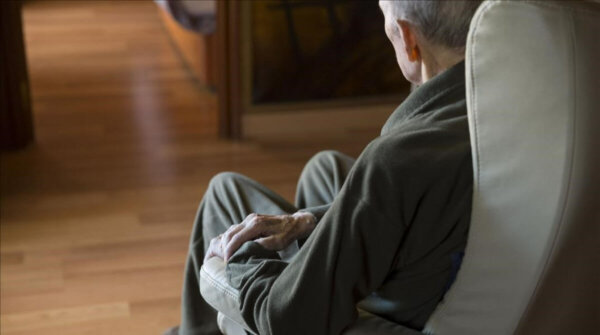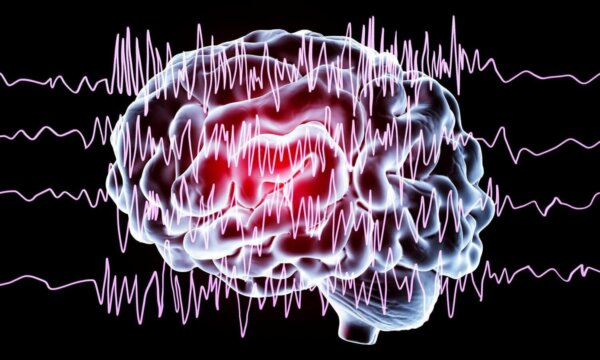The Characteristics and Symptoms of Dyskinesia


Written and verified by the psychologist Valeria Sabater
Dyskinesia is a disorder that makes a person experience abnormal, uncontrollable, and involuntary movements. It usually begins with small facial tics in the buccolingual region or in the hands. Later, these hyperkinetic alterations can develop in the entire body. There are multiple causes for this condition but it usually arises as a side effect of a drug.
It’s easy to confuse this clinical reality with akathisia. However, the latter is more related to states of anguish and the inability to stay still. Thus, people who suffer from it have to go out for walks to move their legs. Nevertheless, dyskinesia is more problematic because people can’t control it and comes along with psychiatric disorders or neurological diseases.
However, between one and five percent of cases are age-related and some older people experience this type of hyperkinetic disorder.
“Telling me to just stop twitching makes as much sense as telling a person without legs to stand up.”
-Patrick Ryan O’Leary-

Definition and symptoms of dyskinesia
This is a movement disorder like ataxia (loss of muscle coordination) and dystonia (involuntary muscle contractions that are usually painful). In this case, the patients with dyskinesia manifest nonvoluntary movements similar to tics. In addition, they’re rather showy manifestations.
As we mentioned above, these involuntary movements usually begin in the face. Later, they manifest in the hands and feet and make normal body movements progressively difficult. The most complex part of this upheaval is that it worsens once it appears. It’s important to know what causes it and seek the most appropriate treatment from there.
Continue reading to find out what the most common types of dyskinesia are.
Drug-induced dyskinesia for Parkinson’s
As we mentioned at the beginning, dyskinesia usually develops in patients with Parkinson’s disease. However, it isn’t the neurodegenerative disorder itself that causes tics and movement disorders. It’s the drugs used as a treatment, in fact.
Parkinson’s develops from an alteration in the neurons that produce dopamine, which die slowly. The cells that control the movement can’t send messages to the muscles without this neurotransmitter. Well, they’re usually taking levodopa in those situations and this increases the production of dopamine.
Studies such as one conducted at the University of San Francisco indicate that dopamine replacement therapy with levodopa relieves Parkinson’s motor symptoms. However, it does so at a cost in almost half of the patients. This is because it promotes the development of involuntary movements, defining a state known as levodopa-induced dyskinesia.
The symptoms are:
- Tics.
- Swaying.
- Pitching.
- Involuntary arm and feet movements.
- Restlessness in the extremities.
The effect of neuroleptic drugs
Another cause of dyskinesia is also due to the use of other medications such as neuroleptics. These drugs could be antipsychotics and major tranquilizers. Tardive dyskinesia can (sometimes) appear when a patient has been following these treatments for some time.
Some of the drugs among which this movement disorder can appear are:
- First-generation antipsychotics, such as haloperidol, zuclopenthixol, perphenazine, etc.
- Second-generation antipsychotics. Risperidone, paliperidone, quetiapine, aripiprazole, etc.
- Antidepressant drugs, such as amitriptyline, fluoxetine, phenelzine, etc.
- Anticonvulsant drugs, such as phenytoin and phenobarbital.
Neurological and autoimmune conditions
Some people with autism spectrum disorder may exhibit dyskinetic movements, such as body rocking. However, this isn’t the only neurological condition that evidences this manifestation:
- It also affects cerebellar degeneration conditions.
- Neurovascular diseases or patients who have experienced a stroke can suffer from it.
- Wilson’s disease is a rare hereditary disorder in which the body can’t get rid of excess copper. In this case, you can also experience it as a symptom of dyskinesia.
- Finally, as far as autoimmune diseases are concerned, it’s common for dyskinesia to develop in people with multiple sclerosis.
Myoclonic dyskinesia
This is a variety within this type of disorder and manifests with involuntary and brief movements originated by a sudden muscular contraction. These alterations are sometimes painful.
The causes of this phenomenon are:
- Progressive myoclonic encephalopathy.
- Encephalopathy caused by a lack of oxygen to the brain.
- Myoclonic epilepsies affect women to a greater extent and are limited to a series of facial tics.

Stereotypies and tics
There’s a type of dyskinesia in which the sufferer has some control over these movements if they learn strategies to reduce them. This phenomenon often appears in people with an autism spectrum disorder.
Depending on the seriousness, there are either milder or more incapacitating dyskinetic tics. Among them:
- Simple tics.
- Common motor stereotypies, like repetitive and ritualized movements.
- Multiple and complex tics similar to severe spasms in which, the person can experience the need to express inappropriate words or even insults. Tourette’s syndrome, for example.
Treatments for dyskinesia
These depend on what’s triggering the problem. It isn’t the same for Parkinson’s as it is for someone with a brain injury. The important thing in all cases is to make a diagnosis and understand the severity of the symptoms.
Generally, people follow some of these guidelines:
- Suspend the use of medications that cause dyskinesia and try others. This seems easy in principle, but it’s actually highly problematic. This is because it keeps you from effectively treating the main disease.
- Botulinum toxin injections often work in those situations in which the dyskinesia affects the face.
- Deep brain stimulation is another treatment with a solid success rate in these conditions.
Finally, the approach to these conditions is always complex and based on interdisciplinary approaches with which to see the patient’s progress. Nevertheless, it’s possible to reduce the impact of dyskinesia and provide a better quality of life for the person in many cases.
Dyskinesia is a disorder that makes a person experience abnormal, uncontrollable, and involuntary movements. It usually begins with small facial tics in the buccolingual region or in the hands. Later, these hyperkinetic alterations can develop in the entire body. There are multiple causes for this condition but it usually arises as a side effect of a drug.
It’s easy to confuse this clinical reality with akathisia. However, the latter is more related to states of anguish and the inability to stay still. Thus, people who suffer from it have to go out for walks to move their legs. Nevertheless, dyskinesia is more problematic because people can’t control it and comes along with psychiatric disorders or neurological diseases.
However, between one and five percent of cases are age-related and some older people experience this type of hyperkinetic disorder.
“Telling me to just stop twitching makes as much sense as telling a person without legs to stand up.”
-Patrick Ryan O’Leary-

Definition and symptoms of dyskinesia
This is a movement disorder like ataxia (loss of muscle coordination) and dystonia (involuntary muscle contractions that are usually painful). In this case, the patients with dyskinesia manifest nonvoluntary movements similar to tics. In addition, they’re rather showy manifestations.
As we mentioned above, these involuntary movements usually begin in the face. Later, they manifest in the hands and feet and make normal body movements progressively difficult. The most complex part of this upheaval is that it worsens once it appears. It’s important to know what causes it and seek the most appropriate treatment from there.
Continue reading to find out what the most common types of dyskinesia are.
Drug-induced dyskinesia for Parkinson’s
As we mentioned at the beginning, dyskinesia usually develops in patients with Parkinson’s disease. However, it isn’t the neurodegenerative disorder itself that causes tics and movement disorders. It’s the drugs used as a treatment, in fact.
Parkinson’s develops from an alteration in the neurons that produce dopamine, which die slowly. The cells that control the movement can’t send messages to the muscles without this neurotransmitter. Well, they’re usually taking levodopa in those situations and this increases the production of dopamine.
Studies such as one conducted at the University of San Francisco indicate that dopamine replacement therapy with levodopa relieves Parkinson’s motor symptoms. However, it does so at a cost in almost half of the patients. This is because it promotes the development of involuntary movements, defining a state known as levodopa-induced dyskinesia.
The symptoms are:
- Tics.
- Swaying.
- Pitching.
- Involuntary arm and feet movements.
- Restlessness in the extremities.
The effect of neuroleptic drugs
Another cause of dyskinesia is also due to the use of other medications such as neuroleptics. These drugs could be antipsychotics and major tranquilizers. Tardive dyskinesia can (sometimes) appear when a patient has been following these treatments for some time.
Some of the drugs among which this movement disorder can appear are:
- First-generation antipsychotics, such as haloperidol, zuclopenthixol, perphenazine, etc.
- Second-generation antipsychotics. Risperidone, paliperidone, quetiapine, aripiprazole, etc.
- Antidepressant drugs, such as amitriptyline, fluoxetine, phenelzine, etc.
- Anticonvulsant drugs, such as phenytoin and phenobarbital.
Neurological and autoimmune conditions
Some people with autism spectrum disorder may exhibit dyskinetic movements, such as body rocking. However, this isn’t the only neurological condition that evidences this manifestation:
- It also affects cerebellar degeneration conditions.
- Neurovascular diseases or patients who have experienced a stroke can suffer from it.
- Wilson’s disease is a rare hereditary disorder in which the body can’t get rid of excess copper. In this case, you can also experience it as a symptom of dyskinesia.
- Finally, as far as autoimmune diseases are concerned, it’s common for dyskinesia to develop in people with multiple sclerosis.
Myoclonic dyskinesia
This is a variety within this type of disorder and manifests with involuntary and brief movements originated by a sudden muscular contraction. These alterations are sometimes painful.
The causes of this phenomenon are:
- Progressive myoclonic encephalopathy.
- Encephalopathy caused by a lack of oxygen to the brain.
- Myoclonic epilepsies affect women to a greater extent and are limited to a series of facial tics.

Stereotypies and tics
There’s a type of dyskinesia in which the sufferer has some control over these movements if they learn strategies to reduce them. This phenomenon often appears in people with an autism spectrum disorder.
Depending on the seriousness, there are either milder or more incapacitating dyskinetic tics. Among them:
- Simple tics.
- Common motor stereotypies, like repetitive and ritualized movements.
- Multiple and complex tics similar to severe spasms in which, the person can experience the need to express inappropriate words or even insults. Tourette’s syndrome, for example.
Treatments for dyskinesia
These depend on what’s triggering the problem. It isn’t the same for Parkinson’s as it is for someone with a brain injury. The important thing in all cases is to make a diagnosis and understand the severity of the symptoms.
Generally, people follow some of these guidelines:
- Suspend the use of medications that cause dyskinesia and try others. This seems easy in principle, but it’s actually highly problematic. This is because it keeps you from effectively treating the main disease.
- Botulinum toxin injections often work in those situations in which the dyskinesia affects the face.
- Deep brain stimulation is another treatment with a solid success rate in these conditions.
Finally, the approach to these conditions is always complex and based on interdisciplinary approaches with which to see the patient’s progress. Nevertheless, it’s possible to reduce the impact of dyskinesia and provide a better quality of life for the person in many cases.
All cited sources were thoroughly reviewed by our team to ensure their quality, reliability, currency, and validity. The bibliography of this article was considered reliable and of academic or scientific accuracy.
- Girasole, A. E., Lum, M. Y., Nathaniel, D., Bair-Marshall, C. J., Guenthner, C. J., Luo, L., … Nelson, A. B. (2018). A Subpopulation of Striatal Neurons Mediates Levodopa-Induced Dyskinesia. Neuron, 97(4), 787-795.e6. https://doi.org/10.1016/j.neuron.2018.01.017
- Romero MT, Rovira S, C. M. (2017). Manejo del paciente afecto de discinesia ciliar primaria. AEPEP Protocolos, (1), 423–438. Retrieved from http://www.aeped.es/sites/default/files/documentos/25_manejo_paciante_dcp.pdf
This text is provided for informational purposes only and does not replace consultation with a professional. If in doubt, consult your specialist.







